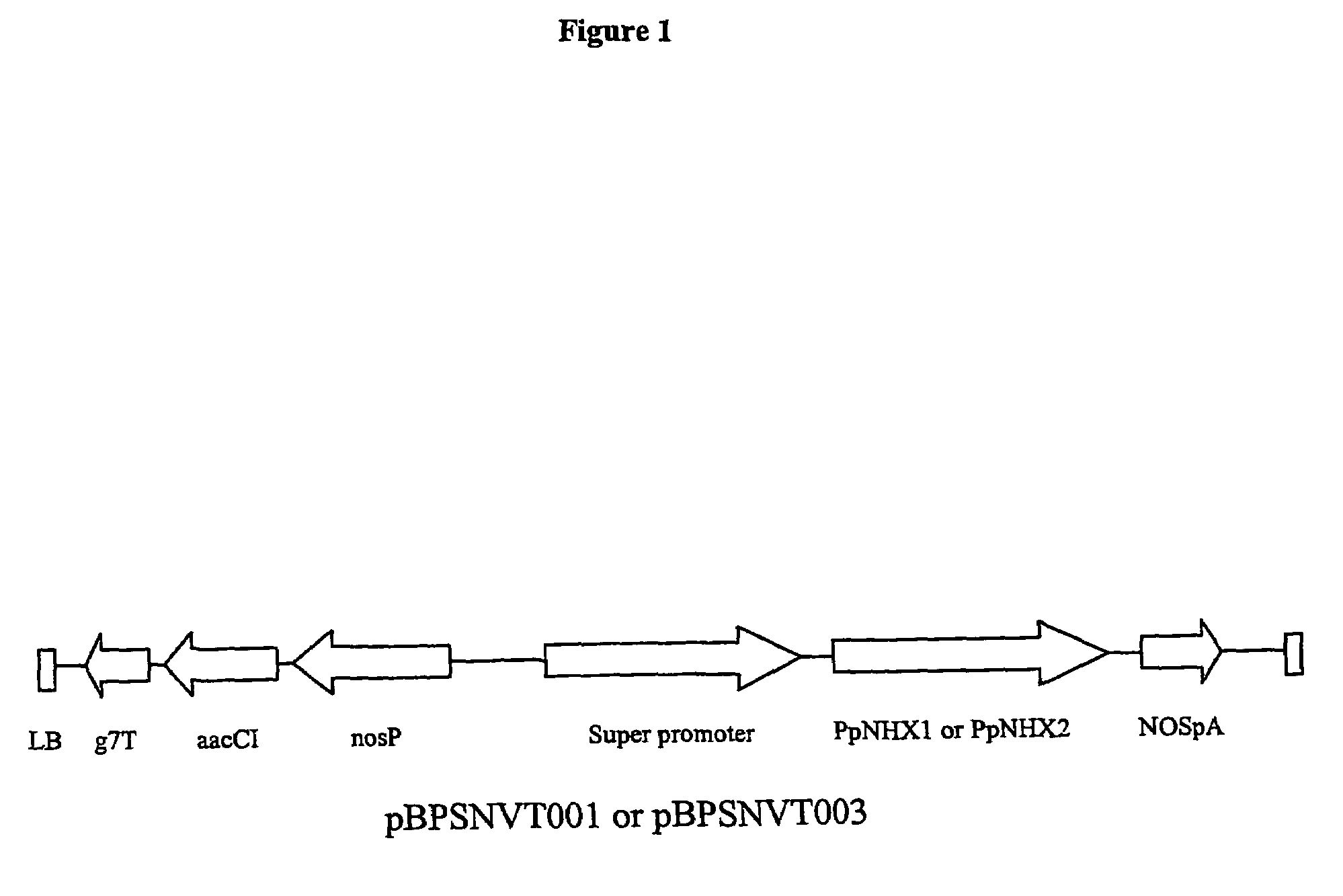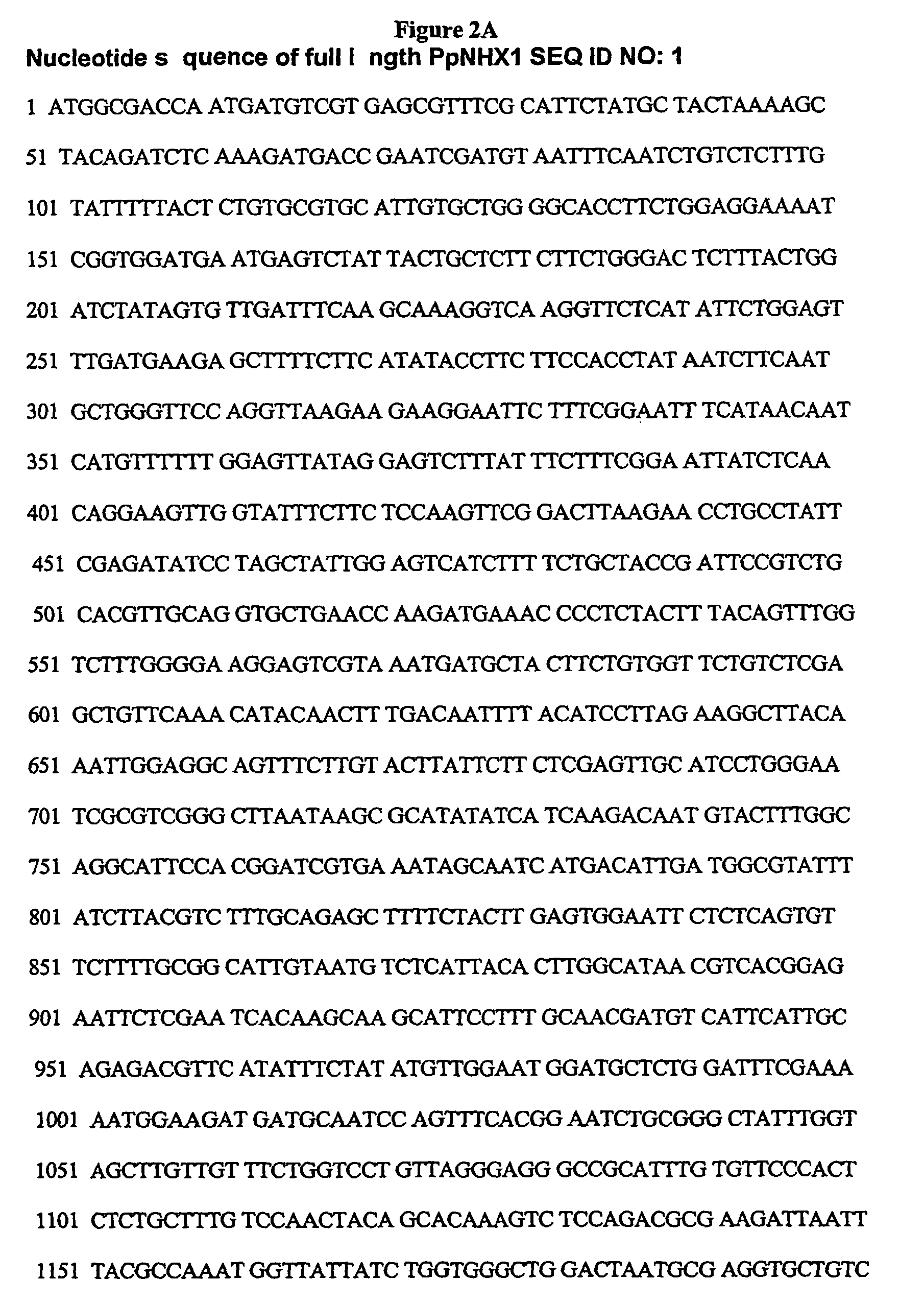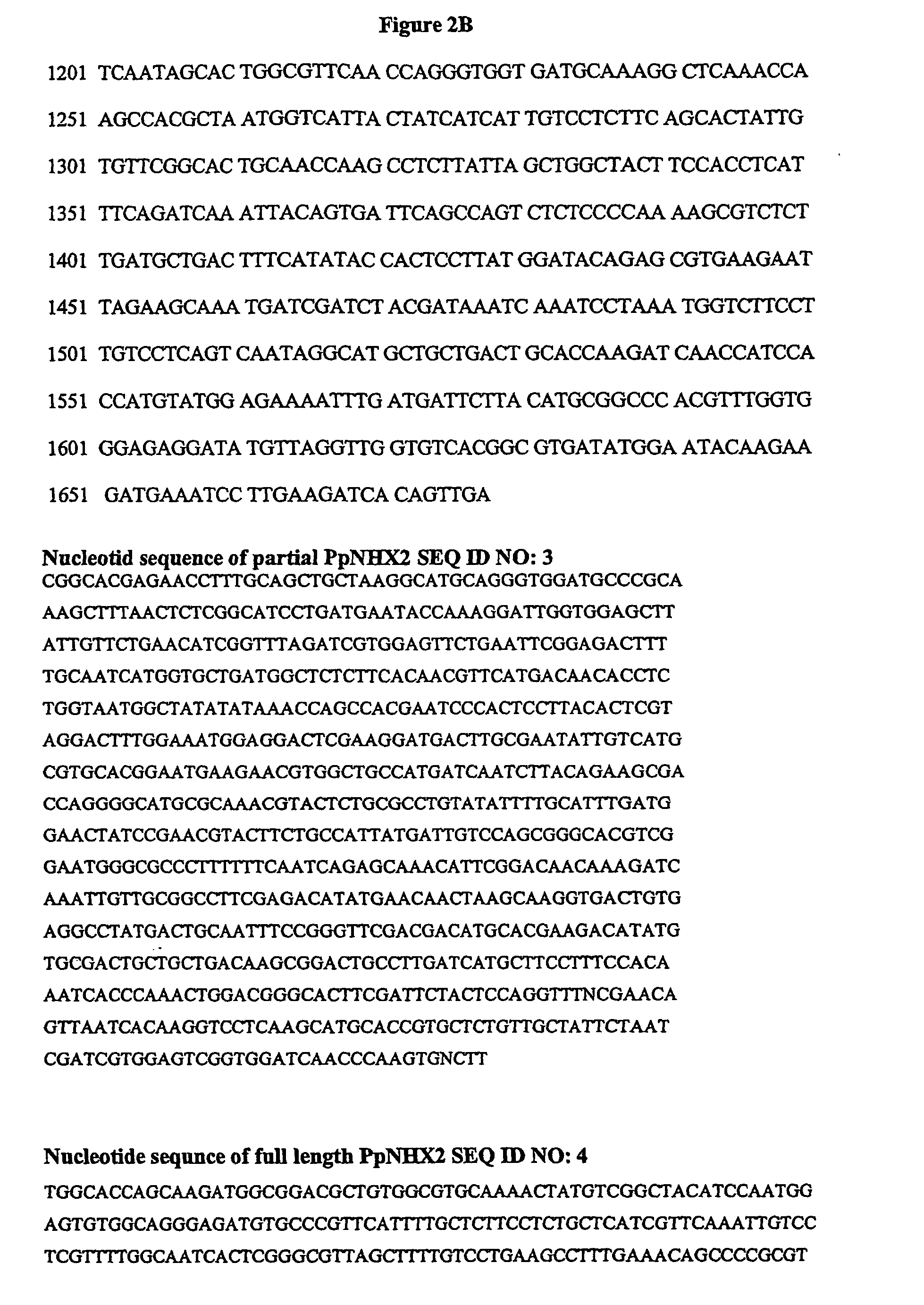Plant polynucleotides encoding novel Na+/H+ antiporters
a technology of antiporter polypeptides and plant polynucleotides, which is applied in the direction of plant ingredients, peptide sources, botany apparatus and processes, etc., can solve the problems of inapplicability of neither improved irrigation efficiency nor drainage system installation, and food shortages in many undeveloped countries, so as to enhance flower development and terpene synthesis, enhance plant defense, and enhance the effect of plant phenotyp
- Summary
- Abstract
- Description
- Claims
- Application Information
AI Technical Summary
Benefits of technology
Problems solved by technology
Method used
Image
Examples
example 1
Culturing Physcomitrella patens
[0445]Plants of the species Physcomitrella patens (Hedw.) B.S.G. from the collection of the genetic studies section of the University of Hamburg were used. They originate from the strain 16 / 14 collected by H. L. K. Whitehouse in Gransden Wood, Huntingdonshire (England), which was subcultured from a spore by Engel (1968, Am J Bot 55, 438–446). Proliferation of the plants was carried out by means of spores and by means of regeneration of the gametophytes. The protonema developed from the haploid spore as a chloroplast-rich chloronema and chloroplast-low caulonema, on which buds formed after approximately 12 days. These grew to give gametophores bearing antheridia and archegonia. After fertilization, the diploid sporophyte with a short seta and the spore capsule resulted, in which the meiospores mature.
[0446]Culturing was carried out in a climatic chamber at an air temperature of 25° C. and light intensity of 55 umol s−1m−2 (white light; Philips TL 65W / 2...
example 2
Construction of the cDNA Library from Physcomitrella patens
[0448]For cDNA library construction first strand synthesis was achieved using Murine Leukemia Virus reverse transcriptase (Roche, Mannheim, Germany) and oligo-d(T)-primers, second strand synthesis by incubation with DNA polymerase I, Klenow enzyme and RNAseH digestion at 12 degree C. (2 h), 16 degree C. (1 h) and 22 degree C. (1 h). The reaction was stopped by incubation at 65 degree C. (10 min) and subsequently transferred to ice. Double stranded DNA molecules were blunted by T4 DNA-polymerase (Roche, Mannheim) at 37 degree C. (30 min). Nucleotides were removed by phenol / chloroform extraction and Sephadex G50 spin columns. EcoRI adapters (Pharmacia, Freiburg, Germany) were ligated to the cDNA ends by T4DNA-ligase (Roche, 12 degree C., overnight) and phosphorylated by incubation with polynucleotide kinase (Roche, 37 degree C., 30 min). This mixture was subjected to separation on a low melting agarose gel. DNA molecules larg...
example 3
Sequencing and Function Annotation of Physcomitrella patens ESTs
[0449]cDNA libraries as described in Example 4 were used for DNA sequencing according to standard methods, in particular by the chain termination method using the ABI PRISM Big Dye Terminator Cycle Sequencing Ready Reaction Kit (Perkin-Elmer, Weiterstadt, Germany). Random Sequencing was carried out subsequent to preparative plasmid recovery from cDNA libraries via in vivo mass excision, retransformation, and subsequent plating of DH10B on agar plates (material and protocol details from Stratagene, Amsterdam, Netherlands. Plasmid DNA was prepared from overnight grown Escherichia coli cultures grown in Luria-Broth (LB) medium containing ampicillin (see Sambrook et al. (1989) (Cold Spring Harbor Laboratory Press: ISBN 0-87969-309-6)) on a Qiagene DNA preparation robot (Qiagen, Hilden) according to the manufacturers protocols. Sequencing primers with the following nucleotide sequences were used:
[0450]
Qiagen1:5′-CAGGAAACAGCT...
PUM
| Property | Measurement | Unit |
|---|---|---|
| pH | aaaaa | aaaaa |
| Tm | aaaaa | aaaaa |
| dissociation constant | aaaaa | aaaaa |
Abstract
Description
Claims
Application Information
 Login to View More
Login to View More - R&D
- Intellectual Property
- Life Sciences
- Materials
- Tech Scout
- Unparalleled Data Quality
- Higher Quality Content
- 60% Fewer Hallucinations
Browse by: Latest US Patents, China's latest patents, Technical Efficacy Thesaurus, Application Domain, Technology Topic, Popular Technical Reports.
© 2025 PatSnap. All rights reserved.Legal|Privacy policy|Modern Slavery Act Transparency Statement|Sitemap|About US| Contact US: help@patsnap.com



